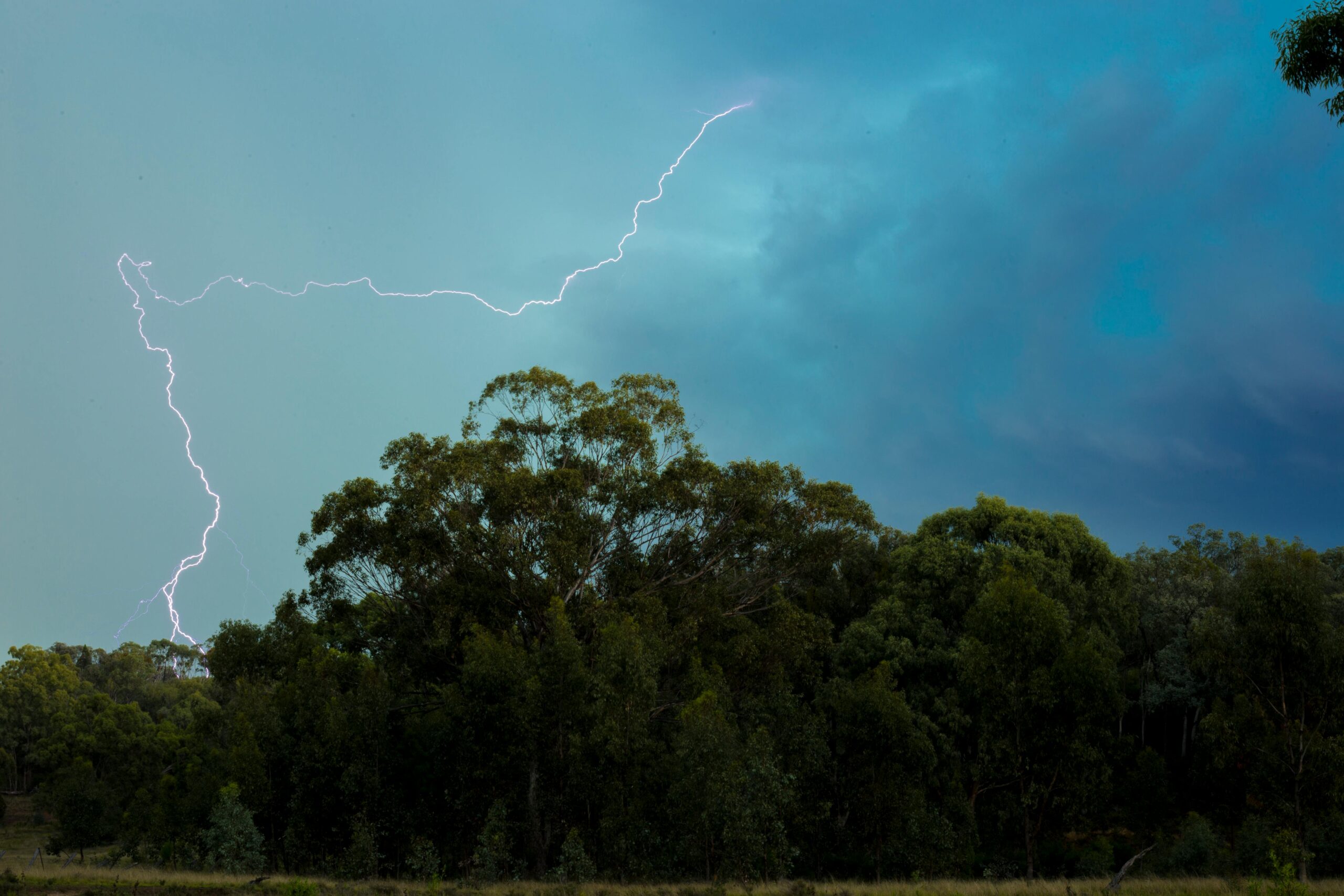In a groundbreaking discovery, researchers have uncovered how the tonka bean tree (Dipteryx oleifera), native to Panama’s tropical forests, has evolved a unique adaptation that allows it to not only survive but benefit from lightning strikes. This remarkable ability gives the tree a significant competitive advantage in the dense ecosystems of the forest.
Harnessing lightning for survival
A decade-long study conducted in Panama’s Barro Colorado Nature Monument, and published in New Phytologist, revealed the surprising resilience of Dipteryx oleifera to lightning strikes. Instead of suffering damage, these events actually help the tree by clearing nearby parasitic vines and competing vegetation. On average, each lightning strike destroys around 2.4 tons of surrounding biomass and removes 78% of the parasitic vines clinging to the tree’s canopy. This process reduces competition and significantly boosts the tree’s seed production—by up to 14 times over its lifetime.
This discovery sheds new light on how lightning, often considered a destructive force, can play a role in shaping the dynamics of tropical forest ecosystems.
Structural resilience to lightning
The tonka bean tree’s structural characteristics are key to its survival when lightning strikes. Its tall, sturdy form likely helps conduct the energy of the lightning strike outward, minimizing internal damage. Traits like dense wood, large water-transport vessels, and nitrogen-rich leaves, which are common among lightning-resistant species, further contribute to its resilience. This structural adaptation allows the tonka bean tree to withstand lightning while simultaneously using the event as a tool for ecological advantage.
Broader ecological implications
In tropical forests, lightning is a major cause of tree mortality, especially affecting the tallest and oldest trees. However, Dipteryx oleifera’s ability to thrive despite—and even benefit from—lightning strikes suggests that such events may play a significant role in shaping forest composition. This unique adaptation is particularly relevant in the context of climate change, as the frequency of lightning strikes is expected to increase with rising temperatures and altered weather patterns. Understanding how species like the tonka bean tree adapt to these changing conditions could have profound implications for forest management and conservation efforts.
Future research directions
Encouraged by these findings, the research team plans to expand their studies to forests in Africa and Southeast Asia. By identifying similar adaptations in other species, scientists hope to uncover broader ecological patterns that could inform strategies for enhancing forest resilience in the face of climate change. The research emphasizes the complex relationship between natural disturbances, like lightning, and evolutionary adaptations, highlighting how certain species can turn potential threats into advantages for survival.
In sum, the tonka bean tree’s remarkable adaptation not only reveals the ingenuity of nature but also underscores the critical role of such evolutionary traits in maintaining the balance of tropical forest ecosystems amidst changing environmental conditions.





